|
Dear Sir or Madam,
Today we would like to draw your attention to upcoming events and seminars and inform you about newly published FOSTA final reports from the focal areas of mobility, construction as well as plant and mechanical engineering. You can find these and all other FOSTA reports in the stahldaten.de store.
We wish you interesting reading.
Your FOSTA team
| 
High interest in FOSTA conference "Hochfester Stahl im Stahl- und Anlagenbau".
On 16 and 17 May 2023, FOSTA organised the conference "Hochfester Stahl im Stahl- und Anlagenbau" at the Haus der Technik in Essen. The event, which was very well attended by around 150 participants, demonstrates the high level of interest in high-strength and ultra-high-strength steels and their enormous potential for new forms of lightweight construction, for efficiency increases in the use of materials and for new types of construction using steel as a material.
To the announcement in the journal stahl.
Information on the lecture programme of the event
| 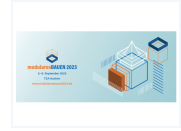
05. und 06. September 2023
modularesBauen 2023
The great demand for exchange on the topic of modular construction among suppliers, customers and the scientific community is shown by the large attendance at the second modularesBAUEN event, which took place in Aachen in September 2022.
The approximately 170 visitors to the event found the relaxed but at the same time professional atmosphere to be the ideal platform for this innovation-laden industry.
As last year, the "modularesBAUEN 2023" congress fair will offer a first-class programme that rewards participation with recognised continuing education points.
Detailed information on the congress fair can be found on the following website.
| 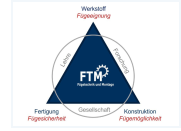
04. und 05. October 2023
Dresdner Fügetechnisches Kolloquium 2023
The XI Dresden Colloquium on Joining Technology continues the long tradition of reporting on teaching and research as well as technology transfer in the field of joining technology and assembly.
You can expect lectures from science and industry on current findings in thermal, mechanical and adhesive manufacturing.
The evening programme offers a variety of opportunities for networking.
Detailed information on the colloquium can be found on the following website.
| 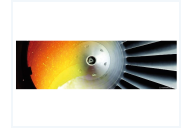
04. bis 06. December 2023
Grundlagen und Trends in der Werkstofftechnik von Stahl
The seminar, organised by the VDEh Steel Institute in cooperation with the Fachvereinigung Kaltwalzwerke e. V., will take place in Düsseldorf.
Contents:
Trends in the materials technology of steel Current and CO2-neutral process routes to steel Crystal and real structures Phase transformations in steels Materials databases Alloy and accompanying elements Steel materials in additive manufacturing Adjusting properties by heat treatment Non-destructive testing of properties Strength and toughness Cold forming Hot forming Fatigue strength Electromagnetic properties Anthropogenic material cycles.
Detailed information on the seminar can be found on the following website.
| 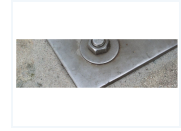
30. und 31. January 2024
Korrosionsverhalten nichtrostender Stähle
The passive layer on its surface determines the corrosion resistance of stainless steel. If corrosion occurs, it means that the passive layer has been destroyed. This seminar will show how resistant the steel is, how destruction of the passive layer can occur. The decisive factors covered in this seminar are the right choice of steel, machining and processing and the correct treatment of the surface.
Detailed information on the seminar can be found on the following website.
| P 1336 – Influence of surface coatings on liquid metal embrittlement during resistance spot welding of advanced high strength steel sheets (IGF-No 20812 N)
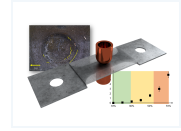
The coating of high-strength steel sheet influences the occurrence of liquid metal induced cracking (LME). Therefore, in this work, coatings commonly used in industry with the same base material were characterised with regard to their structure and chemical composition and investigated with regard to their susceptibility to LME. From this comparative investigation, potentials for resistance to LME were identified. These potentials are tested experimentally by using a method developed by the research centre. In addition to uncoated samples, the investigations covered zinc coatings commonly used in industry, such as electrolytically galvanised, hot-dip galvanised, galvannealed and zinc-magnesium coatings.
The LME susceptibility of these different coatings is investigated with a welding under tensile load test set-up. The resulting susceptibility is derived from the crack lengths and the probability of occurrence of LME in the individual tests. A LME susceptibility ranking for the zinc coatings could be determined. Zinc-magnesium coatings were found to be most susceptible to LME, followed by hot-dip galvanised and galvannealed. The greatest LME resistance was found in electrolytically galvanised samples.
Recommendations for action to increase processing safety and weld spot quality are derived from the results. more information
|
| P 1396 – Analysing Failure Behavior of Adhesively Bonded Steel Joints during Material Sparing Debonding in Body Repairs (IGF-No 20788 N)
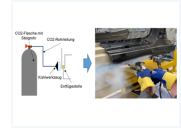
Current steel-intensive body concepts are based on the combination of different materials in order to take advantage of the different mechanical properties. These highperformance materials are bonded together to form a lightweight body using adhesive bonding technology. Oriented to a typical product life cycle, many research projects are largely concerned with the phases of research and development as well as production and operation. This research project, on the other hand, focuses on the repair and refurbishment of bonded vehicle structures, most of which are carried out by small and medium-sized companies. Increasing demands for safety and comfort lead to the need for viable and sustainable repair methods that produce the same mechanical properties of the bond as the original structure.
In repair shops, bonded joints are often weakened by applying heat to reduce ther equired removal force. However, this process, which is difficult to control, has adamaging effect on the components to be preserved and on adjacent adhesive layers, and leads to severe component deformation. A process that allows bonded steel joints to be de-bonded gently and efficiently brings a decisive advantage and promotes recycling management and resource conservation.
In tests, the embrittlement of the adhesive by low temperatures proved to be very promising for component-conserving separation. In DMTA tests, structural adhesives show a secondary glass transition below the usual application temperature of -40 °C. This is due to the viscous elasticity of the adhesive. This is due to the viscoplasticizing particles in the adhesive. The hypothesis that cooling below this secondary glass transition greatly reduces the energy absorption of the adhesive and thus enables component-conserving removal of the steel materials was confirmed in this work. The possibilities and limitations of this process were successfully investigated and the failure behavior of the adhesive was analyzed. more information
|
| P 1322 – Development of a design concept for multiaxial loaded tools made of carbide-rich tool steels for the application case cold work (IGF-No 20356 N)
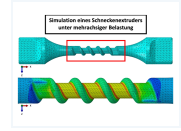
The requirements for tool steels are versatile, especially for cutting, cold forming and plastic moulding tools. High hardness, sufficient toughness, wear and corrosion resistance are important criteria. The right balance between these requirements is achieved through chemical composition, manufacturing processes and heat treatment. As a result of technological advances, wear and corrosion are often no longer life-determining factors. Instead, the fatigue strength of tool steels is gaining in importance.
Nevertheless, there is a lack of experimental investigations and statistical validation of fatigue strength values. Standards and guidelines do not provide relevant values for tool design. Fatigue-based tool design would result in more efficient material use, improved service life predictions and material development for tool manufacturers and designers, especially for small and medium-sized enterprises (SMEs).
This project investigates how stress and microstructure variations quantitatively influence the fatigue strength of tool steels. It aims to design tools for multi-axial fatigue loading. Cold work tools, due to their loading and geometry, often experience multi-axial stress states that can induce non-proportional fatigue. Therefore, extended failure hypotheses are considered. A test approach investigates cold work and high speed steels under uniaxial and multiaxial fatigue loading as well as crack propagation and fracture toughness.
The obtained material parameters are used to develop a material-specific design concept, which is validated by multi-axial tool tests. The project aims to establish a sound database for materials in standards and to improve tool design. more information
|
| P 1215 – Distribution of intermetallic phases during laser beam welding of press hardened steels (IGF-No 20652 N)
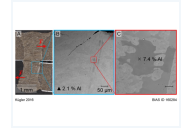
The state of the art in joining ultra-high strength steels shows that welding of already press-hardened components leads to reduced mechanical joining properties. Current research results indicate that in laser beam welding the formation of intermetallic phases is critical, as they can accumulate at the fusion line and cause cracking. The aim of this project was to increase the strength of laser welded joints of manganese-boron steels by minimising the crack initiating effect of the intermetallic phases. This was to be achieved by a uniform distribution of the intermetallic phases in the weld metal using beam modulation strategies or targeted ultrasonic coupling.
Investigations showed that a partial removal of the coating on the contact surfaces can reduce the agglomeration of the coating components. Targeted ultrasonic coupling did not prevent the agglomerations and resulted in wear of the horn. The application of local beam modulation showed promising results in preventing agglomeration. Energy dispersive X-ray spectroscopy showed a uniform distribution of the coating residues in the weld structure. The strength of the joints was less influenced by the agglomerations, but rather by the general layer deposition and the hardness of the microstructure.
The applicability of local beam modulation was demonstrated using the example of laser deep penetration welding of hat profiles. The aim of the research project to homogeneously distribute intermetallic brittle phases and thus minimise the crack-initiating effect was achieved. more information
|
| P 1399 – Development of a methodology for evaluating the bonded joint of a steel-intense ultimaterial battery tray at mechanical and medial load in consideration of the interphase structure (IGF-No 20822 N)
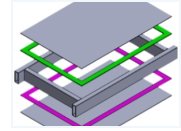
One of the main requirements for the adhesive bonding of battery housing structures is to ensure tightness and corrosion resistance in the wet area of the vehicle. These requirements can be transferred to other industries with a strong SME focus, such as plant and container construction. Here, there is a great deal of uncertainty on the market as to how a reliable design method, based on experimental tests of a corresponding steel bonded joint, as well as its verification and quality assurance, can look. Elaborate tests on real components are challenging, especially for SMEs, due to the high financial costs involved. For this reason, the research institutions have developed an applicationoriented and fundamentally scientifically validated method to predict the long-term behavior of the steel bonded joint under the given requirements. To this end, materialadhesive ombinations relevant for use in battery housings were first selected. Then, operationally relevant corrosive loads for bonded joints were set, and requirements for the tightness of bonded joints were researched. Afterward, the long-term resistance of the adhesive system to the defined rapid aging tests was determined on the basis of adhesive substance samples. Subsequently, the influence of the load on steel-intensive mixed joints was identified, and a test rig was developed, which enables a leak test under superimposed mechanical load. The results of the leak test were correlated with the structure of the adhesive/metal interphase and its load-dependent degradation behavior. From the knowledge gained, a test methodology for determining the resistance was developed in addition to a model for the damage mechanism. These findings primarily serve SMEs for the long-term resistant design of bonded joints.
To validate the method, a sample geometry similar to that of a component was developed, which was used to verify the transferability of the test method to more complex components. more information
|
|
|
|











